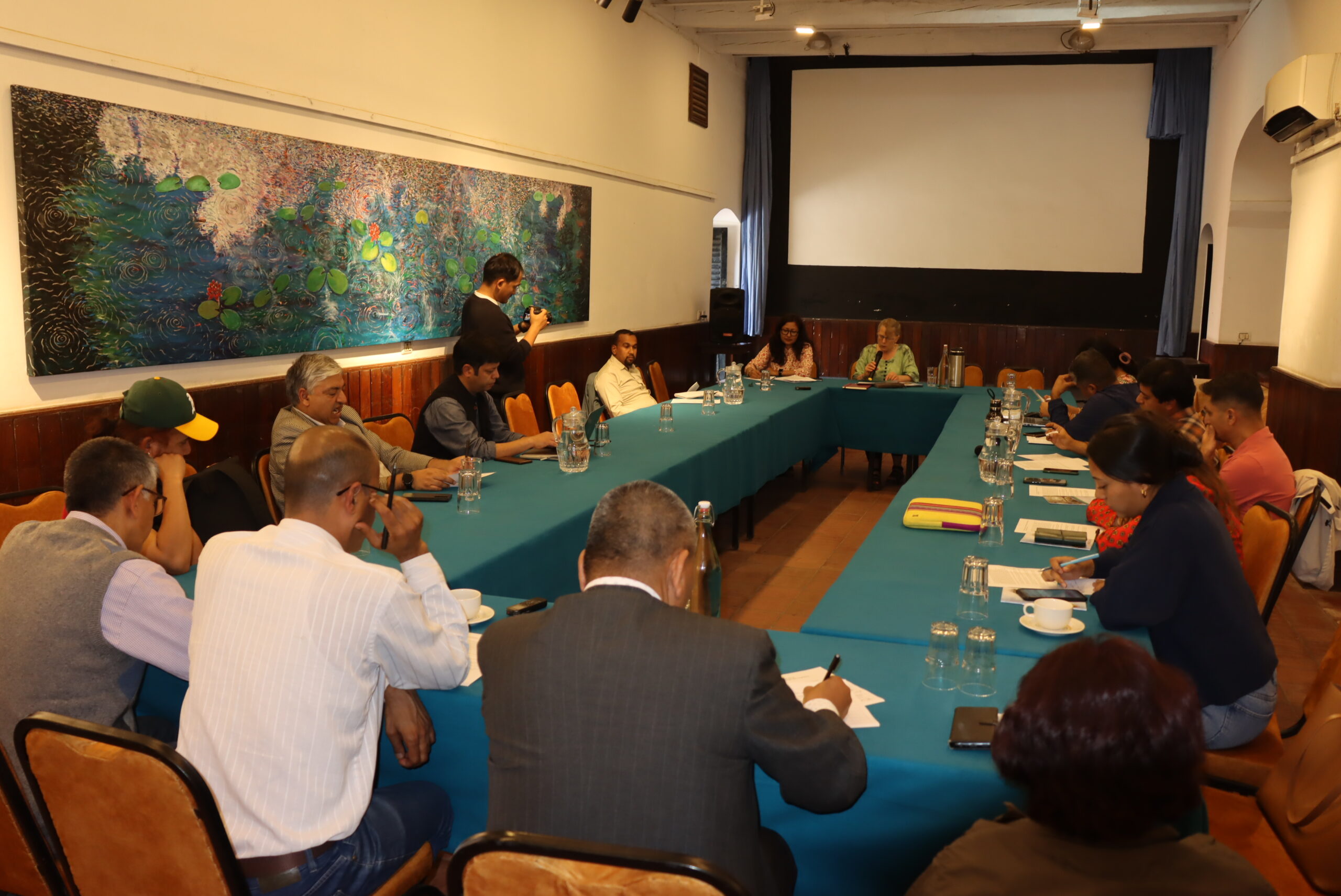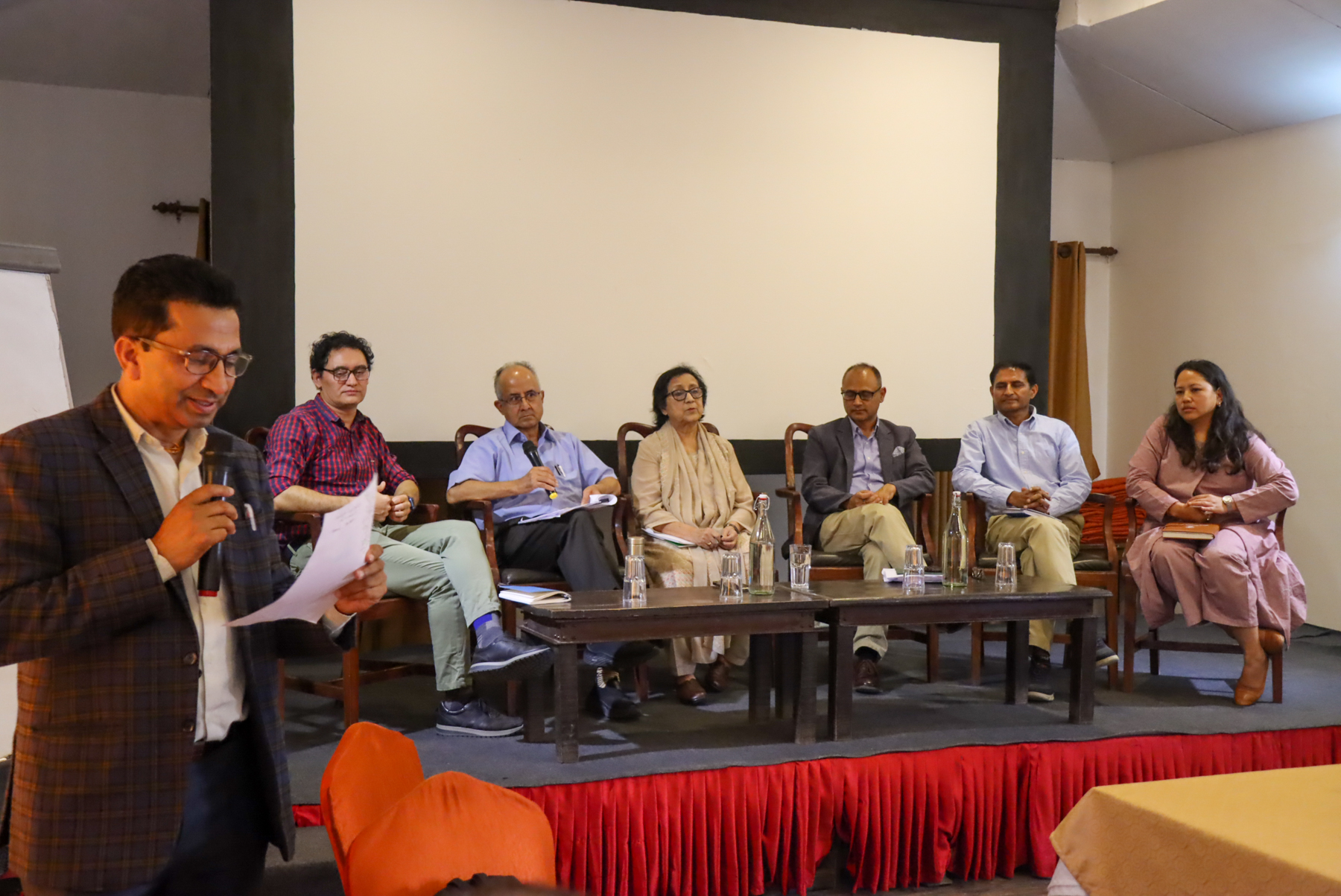SIAS in collaboration with ForestAction (FA) and Swedish University of Agricultural Science (SLU) organized a district-level workshop in Dhading on 25th March 2022. The main objective of the workshop was to explore the intensity and impact of wildlife damages, policy provisions and its implementation challenges and weakness, measures and possible solutions to minimize the farmer-wildlife damages. In the workshop, we invited representatives from Rubi Valley Rural Municipality and farmers of nearby Dhadingbesi (district headquarter), Neelkantha Municipality, Sub-Divisional Forest Office, Agriculture Knowledge Centre, Veterinary Hospital and Livestock Expert Centre, Dhading, and some ward-level stakeholders. There were altogether 23 participants in the workshop including the researchers from FA and SIAS and two students from SLU. The workshop which was facilitated by Dr. Bishnu Hari Poudyal from ForestAction ended with joint lunch and informal conversation with the participants.
In the workshop, District Forest Officer (DFO) of Dhading talked about existing policy provisions on wildlife damage relief guideline and shared associated weakness and challenges on their implementation. He also informed that there is lack of awareness regarding relief. Hence, he suggested implementing awareness programs through local government. According to the Deputy Mayor of Neelkantha Municipality, although they have allocated relief budget for the damages caused by monkey and wild boar, he admitted that without controlling wildlife population, relief distribution would not be a solution.
As reported by the participants, the major problematic wild animals in case of crop’s damage are monkey, wild boar, deer and porcupine; leopard in case of livestock’s damage and bear in case of human attack. In order to control the wildlife problem, some suggested cultivating crops and grasses that monkeys or other wild animals don’t eat such as Molasses grass (Melinis minutiflora) and kiwi fruits. Some suggested planting fruit trees on both sides of the roads. As a long-term solution, some participants suggested adopting family planning measures to reduce the number of monkey population, and other measures for management of wild life populations.
Participants agreed that there are different reasons for increasing incidences of crops damages and wildlife attack to the livestock and human. For example, lack of food, water and suitable habitat for animal in jungle or changing climate might have roles in increasing the wildlife number. Concluding the workshop, Dr. Dil Khatri, Executive Director, SIAS said the composition of the trees in the forest and socio-economic changes might be the reasons for wild animal growth. He suggested the need of research in understanding the problems. He added that we might otherwise adopt interventions in one way but there might be other impacts hence, future policy recommendation should be evidenced-based.




